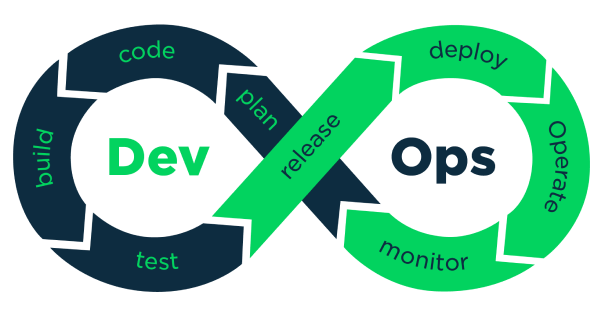Some processes change the world and make it more efficient. DevOps is one such practice that is taking businesses by a storm and infusing efficiency and agility into their processes. The term DevOps implies programmers working with operators and testers to automate things.
According to Gartner, “Although DevOps delivers compelling business advantages, many organizations struggle to benefit from DevOps initiatives due to uncertainty about how to approach them.” What exactly to automate, and where to start, can be overwhelming. This post discusses some of the DevOps services best practices that can help a business realize its true potential.
What is DevOps?
DevOps services is the latest buzzword transforming the IT sector. Development and Operations, DevOps managed services is about setting the cultural changes, practices, and integrating technologies that improves an organization’s capacity.
Avoid time-consuming manual work while reducing release risks by following DevOps services principles to automate the release and deployment process. And as you automate, using advanced deployment patterns can help you speed up the software delivery cycle while maintaining control over the way your applications are deployed.

DevOps and Managed IT Services
DevOps and Managed IT Services are two approaches that can both facilitate technological innovation in your company. With DevOps services, software developers and managed IT services teams in charge of operations are in deep communication with each other. There is more cross-knowledge between the developers and IT operations.
DevOps Best Practices
The DevOps services best practices are based on improving feedback at every step for faster builds, faster deployments, faster recovery, faster error identification, faster server builds and faster notification of errors.
Here are some DevOps best practices to keep in mind.
Know your mean time to recovery
Instead of trying to fail less often, DevOps aims to recover more quickly.
Time to build and test
With DevOps, developers can fix issues during development. In many cases, the team can see a massive improvement by writing better code for fewer errors and implementing automated regression checks for speedier builds.
Deploy to production
Once the deploy decision is made, assess the time it takes to get on production. DevOps solution might start with some percentage of the deploy, or, perhaps, develop a new architecture to make deploys more seamless.
Identify and notify
Calculate the time taken to identify a bug if it goes into production. Using DevOps services, you might find some common elements if you look into the last few bugs deeply.
Fix the bugs before they occur
Automation helps in running more tests and increases the testing frequency. This way, it promotes early bug-fixing and enhances the overall product quality.
To really utilize DevOps solutions, take a good look at a handful of recent failures in production. Figure out both how far apart they are and how long they took to get fixed. Just start with what and then ask how to roll out DevOps step by step.
To know more about how your team is adapting to DevOps solutions, and whether DevOps are working well for your company, avail the DevOps services, at HIPL. Heuristics Informatics Pvt Ltd offers DevOps as part of our Managed IT Services for continuous optimization and a stable system. We consider DevOps managed services to be a positive cultural change that builds teams, while expediting your development process.






